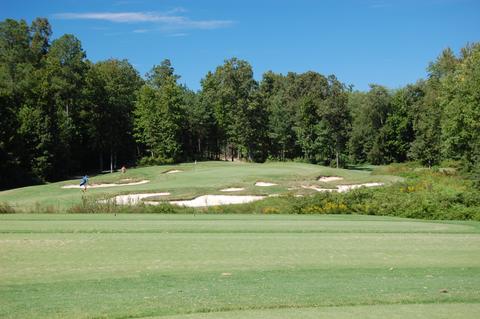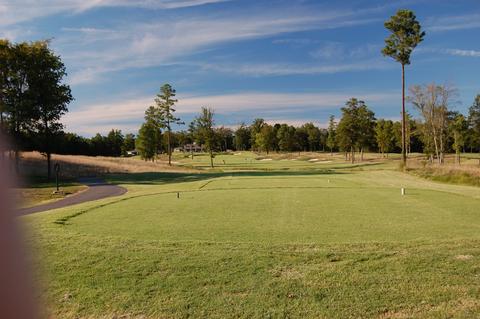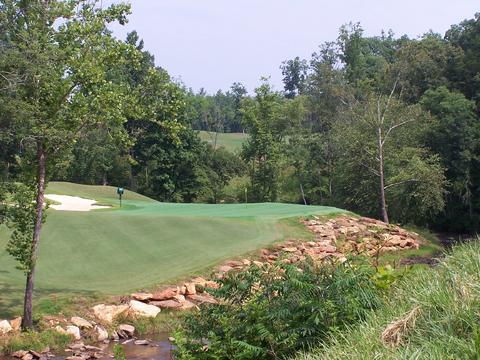
The 6th hole at Rock Barn, a long par 4, brings a creek into play in front of the green.
Senior PGA professionals are making their annual stop at Rock Barn Country Club and Spa this weekend. I had the opportunity to visit the community and play the golf course in 2006. Here are some of the observations I made back then about the community and its public-accessible golf course back then. Coverage begins early this afternoon on The Golf Channel.
I played all 18 holes of the Robert Trent Jones Jr., layout and left the shorter Tom Jackson golf course for another day. I liked the Jones course from the first hole, which was what an opener should be, a fair driving hole where you can let out a little shaft if you want, clearing the bunker on the left for a mid-iron approach. Choose the right side, and fairway bunkers come into play leaving you potentially with a long iron over bunkers at greenside. Nice opener.
The risk reward formula was characteristic of the rest of the driving holes at Rock Barn, with fairway bunkers generally in play where approaches were shortest to the greens, but sometimes covering the edges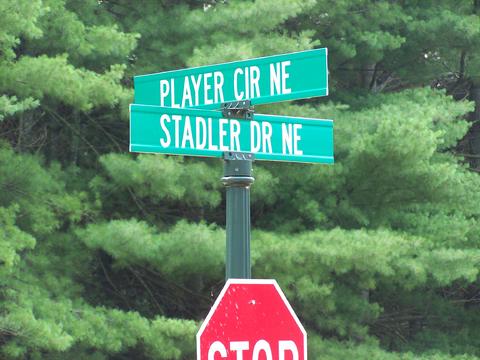 of the "safer" landing zones. Water, in the form of ponds and a stream that runs throughout a good part of the course, come into play on significantly offline shots and on a few of the par 5 approach shots. Overall, the most compelling featue of the well conditioned and beautifully designed classic course is the bunkering. Jones ran up the bill on sand, and to good visual and playable effects.
of the "safer" landing zones. Water, in the form of ponds and a stream that runs throughout a good part of the course, come into play on significantly offline shots and on a few of the par 5 approach shots. Overall, the most compelling featue of the well conditioned and beautifully designed classic course is the bunkering. Jones ran up the bill on sand, and to good visual and playable effects.
Rock Barn, whose homes homes for sale start in the $300s (was mid six-figure range back in 2006) for nice views of the golf course, also maintains a world class spa, as well as the customary amenities of country club living. But the place is serious about golf. Not only do they offer 36 holes of excellent golf, but also most of the street names honor legendary golfers.
If you would like a local real estate agent to show you around Rock Barn, please let me know and I will arrange it without any cost or obligation whatsoever to you (all we ask is that you register here at Golf Community Reviews, which is also free and without hassle). We will never share your personal information with anyone.
Rock Barn and the town of Hickory are about 90 minutes from Asheville, Charlotte and Winston-Salem.
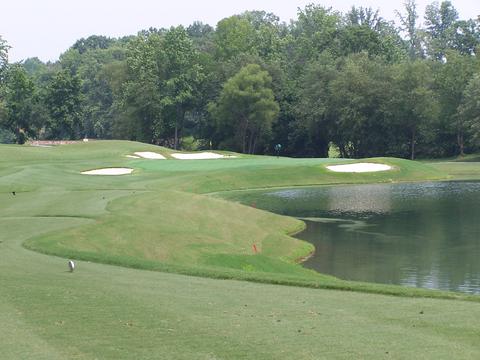
The par 3 17th at Rock Barn is vintage Jones Jr, water kind of in play, bunkers definitely so.




